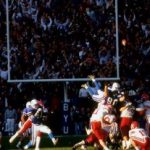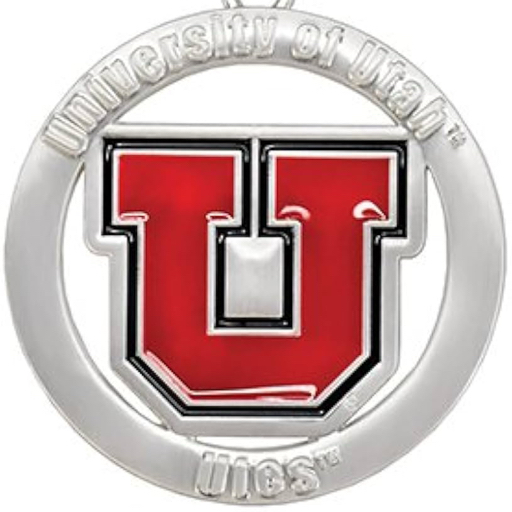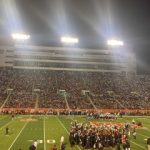How to recruit players to transfer
Welcome to Ute Hub › Forums › Utah Utes Sports › Football › How to recruit players to transfer
- This topic has 5 replies, 5 voices, and was last updated 2 hours, 17 minutes ago by
 Chasqui.
Chasqui.
-
AuthorPosts
-
-
 YergensenParticipant
YergensenParticipantWednesday at Big 12 Media Days, Snowden confirmed he was recruited to leave Utah for BYU in the offseason.
“It wasn’t directly to me,” he said. “BYU wasn’t the only school [to reach out]. It is kind of what the name of the game is with the transfer portal.”
Snowden was never in the transfer portal. But the junior didn’t feel as though BYU tampered — or illegally reached out to him.
By NCAA rule, a team cannot contact a player directly unless they have entered their name into the transfer portal.
“I wouldn’t say it was any tampering type thing. It was more [through] agents,” he said.
Needs to be rules and penalties around incentivizing players, using any channel, to transfer. Until then, c’est la vie.
-
 Ute DubParticipant
Ute DubParticipantIf the NCAA was worth anything, they would make the agents register to be agents through the NCAA, and if they tamper, they lose their status and can’t represent anyone.
-
Jim Vanderhoof
ParticipantTotal BS. If agents can contact other agents and offer more $$ isn’t that tampering? What’s the difference? These players can get offers without being in the portal. Why enter the portal? Shop around and find the best offer then enter the portal.
The system isn’t working. It is only benefiting the players and agents at the cost of the university, donors and fans.
-
 2008 National ChampParticipant
2008 National ChampParticipantIt isn’t tampering. NIL deals, be definition, are not based on a kid attending a specific school. That would be pay-to-play which is illegal under the NCAA bylaws. NIL deals can follow a kid to whatever school he chooses. So potential interest can be couched as “boy, if you were in this market we think you could maximize your NIL much more so than you are currently. It’s too bad you aren’t playing at a University which is located closer to our market.”
The second issue is that Letters Of Intent are no longer binding. They used to be for the 5 years a kid was allowed to use up their eligibility unless either the school agreed to let them go or they had achieved graduate status.
Until player salaries become more attractive than NIL, I just don’t see a way to stop what’s currently happening. And even with salaries, which I assume will include binding the player to the school for a determined period of time, I can see those getting challenged in court consistently.
As a hypothetical, let’s imagine the new salary structure was around in 2020. Ty Jordan would have come in at probably RB4 rate (behind Brumfield, Wilmore, Bernard). Following that season, and assuming he doesn’t incur a self-inflicted gunshot wound at a Christmas party, everyone should realistically expect him to be bumped to the RB1 rate. But what if Utah doesn’t want to give him that bump? Brumfield isn’t transferring because he was getting RB1 money to sit on the bench and no agent worth their salt would have allowed him to sign a contract where the school could lower his compensation based on “non-performance”. So either Utah tears up the Brumfield / Wilmore deals and renegotiates with Jordan or it ends up in arbitration and potentially blows Utah’s cap. Because every dollar one kid makes is one less that’s available for anyone else.
And before anyone says the school would never lowball a kid, just think of why we are in this situation in the first place. Right now Utah is incentivized to put the best players on the field. What happens when it is in the school’s best financial interest to keep a kid, who is better than the starter, on the bench because it won’t trigger an incentive clause? All you have to do is look at MLB where they routinely keep star prospects in the minors as long as they can to gain extra years of financial control before that prospect can apply for free agency. When it turns in to a business, you’d better be prepared for everyone to act in their own best interests.
-
 YergensenParticipant
YergensenParticipantFree agency shouldn’t apply to rostered players with NIL deals. It doesn’t in pro sports. You want to be a free agent and test your market value? Decommit from your school and NIL deal and enter the portal. Until then you don’t get answers to the test.
-
 ChasquiParticipant
ChasquiParticipantThe NIL stuff really needs to be more contractual. If you sign a big deal, great, but you are tied to that deal/program with a contract. Each side can work it out if the want 1,2,3, or 4 years but that way, both parties have protection.
-
-
AuthorPosts
- You must be logged in to reply to this topic.
